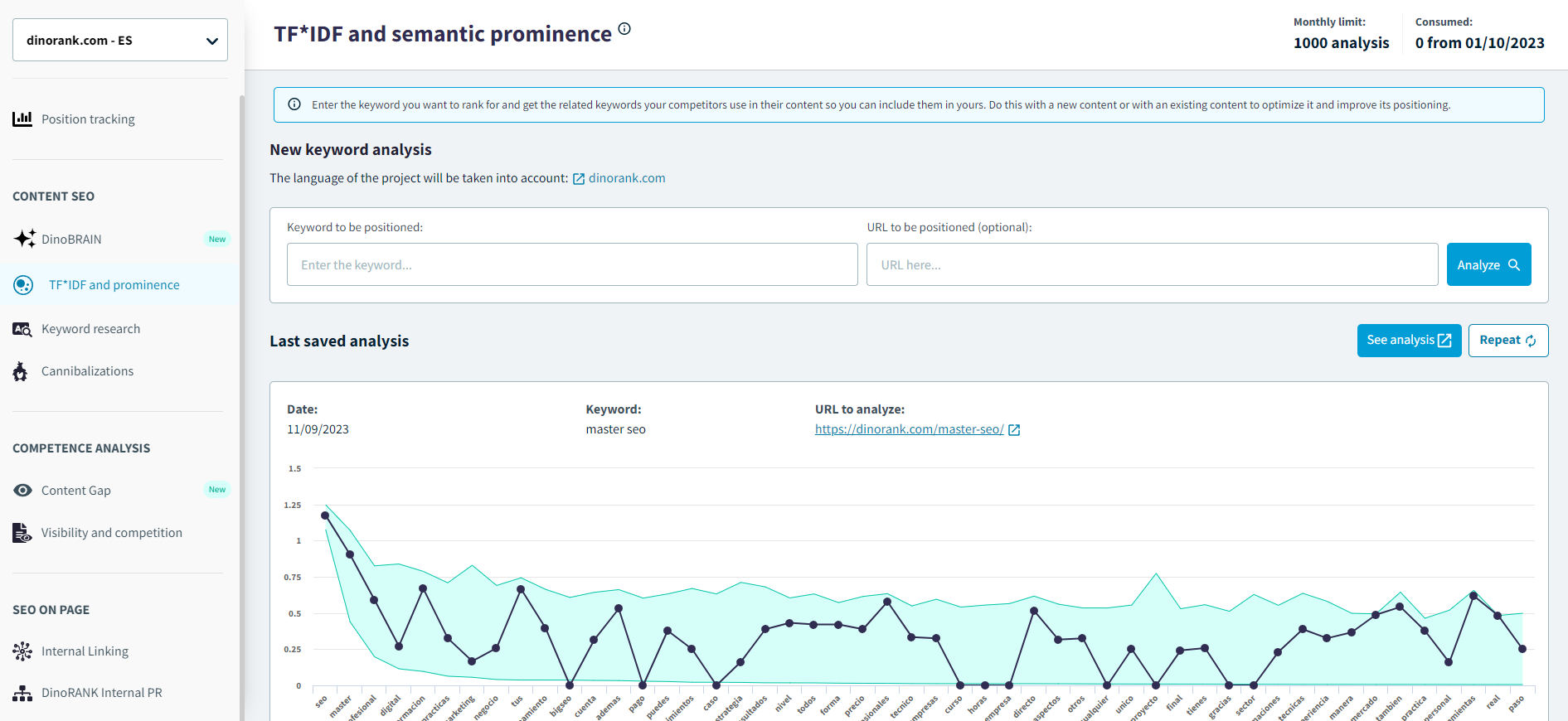
If there has been one event in the last year that has impacted the world of content creation and SEO search optimization, it has been the appearance on the scene of ChatGPT.
Artificial intelligence (AI) has been gradually introduced into content creation in recent years with interesting tools for automatic content creation such as Copymatic.
But all these tools, on one side or the other, limped.
And, suddenly and without warning, on November 30, 2022, OpenAI gave free public access to its ChatGPT chatbot, which turned out to be much more than a simple chatbot but a conversational AI tool with power and quality on another level.
A year later we are still digesting this impact, debating which professions are going to die, and exploring fields of application and projects for which it can be used.

On the SEO side, there were many predictions that this was going to be (once again) the death of SEO since search engines like Google, with something like this, were hardly going to be used.
But, once again, things have not gone as planned.
Google is still in top shape, yes, getting its act together to compete with OpenAI with tools such as Bard, but users, once again, are not changing habits so quickly; the rate of use of ChatGPT has even decreased.
Well, it means that there is good news because we are in the best possible scenario: creating and positioning content on Google still has a long way to go; it will continue to do so for many years to come, and it has never been easier to create it.
If you know how to harness the potential of AI, you can create quality content much faster than before. And that also means that it has become more cost-effective to do so.
But you have to know how to use AI; not everything goes, either by learning on our own or by going to specialized training that helps us integrate these new technologies into our SEO tools strategy.
Therefore, I invite you to take advantage of this new reality and learn how to create content and position it with the help of artificial intelligence.
Thanks to AI, we can generate content ideas, understand search intent or even structure our website.
Let’s take a look:
Let’s start with ideas.
This is something that is often the most difficult: finding the inspiration to get a good start, and that is often key to taking you to that state of “flow” in which things seem to come out on their own and at full speed.
Well, that inspiration comes so much easier when someone helps you. And that someone may be ChatGPT.

Keyword research always starts with a reflection phase.
You must consider what the objective of your website is, what problem you want to solve or what you want to talk about, and, especially, what the concerns of your target audience are.
Generally, it is a process of analysis in which you can use different resources.
For example, you can study websites on the same subject to find out what they tell and how they are structured.
You can describe what your ideal customer is like (known in marketing as a buyer persona) and specify what content they are interested in.
Or you also have the option of using your own knowledge of the sector to define objectives based on your experience.
In fact, you now have this much faster possibility to get ideas about your website.
And I’m sure that more than once it will surprise you.
With a good prompt (or set of instructions), we can ask ChatGPT to tell us the approach and content we can give to our website.
Obviously, we are not going to trust one hundred percent what an AI tells us, but, thanks to it, we can obtain a consistent base in a few minutes that we can then polish.
It is a solution to speed up this process of reflection and thus avoid the problem of the blank page that so often blocks us when we start collecting ideas.
If you’ve had the courage to go to the beach on a Sunday in August, I suppose you’ve faced the titanic mission of getting your towel spread out on the sand.
On the other hand, on a Tuesday in October, you surely don’t have too many problems. It is even likely that you will do it on the front line without difficulty.
Something similar happens in SEO. Normally keywords with a lot of search volume also have a lot of competition, and you will sweat a lot until you manage to rank for them.
When your website doesn’t have much authority (even if it does), it’s much easier to focus on keywords with few searches.
These are the so-called long-tail keywords, as they are usually words made up of several terms.
The idea behind this strategy is the following:
An article that is positioned early by a long-tail word will receive visits and gain authority.
That authority will have an impact on the article itself, which may then improve its position for other, more generic keywords.
By extension, thanks to the improvement of the positioning of the articles, together with good internal linking, the entire website will gradually improve its rankings.
The process I use to detect long tails with DinoRANK is very simple:
We enter a keyword, “seed.”
We sort the resulting keywords from lowest to highest search volume.
We are left with those made up of several terms and that are also interesting for our website.
We run those words back through DinoRANK’s keyword research module.
We repeat until no new keywords appear in the results.
As you can see, it is a very simple process, but thanks to which we can find keywords with few searches that will be much easier to position.

Now that we have ideas and keywords, it’s time to elaborate on them a little more.
Here it is very important to understand that it is useless to create content around a keyword if it does not respond to what the user is looking for.
This is what is known as search intent, which I already talked about in this other post and about which you can find an introduction from scratch here:
The key message here is that search intent is critical if we want our pages to rank correctly.
And how can we know this search intent?
Very simple: just ask Google.
Imagine that you want to create content about gazpacho. In that case:
If you search for “gazpacho” on Google, you’ll see that the results shown are mainly recipes to make this dish at home.
If, on the other hand, you analyze the keyword “best gazpacho,” you will discover that what the search engine optimization returns are lists with the most valued gazpacho brands.
And if you look at the keyword “buy gazpacho,” you will notice that web stores where the product is sold appear directly.
Therefore, on the one hand, you must find out what search intent is behind certain keywords and, on the other hand, decide which of them you want to answer and create the right content based on the objectives of your website.
But we have another possibility to know this search intention in case it generates doubts: ask ChatGPT directly.
Now, although ChatGPT’s answer can be useful to give you a general idea, I always prefer to confirm it on Google, especially when I have already made the decision to talk about a specific topic.
It costs nothing, and so I am absolutely certain that the orientation is correct.

When we have a sufficiently extensive list of keywords, it is time to analyze and classify them to make decisions about the content we are going to create.
There are many ways to do this segmentation, based on what your goals are. Here are some of the most common:
Search intent. Is the user simply looking for information? Does he want to make a transaction? Or is he still in a phase of analysis or consideration prior to the purchase?
Type of content. What does Google offer to satisfy search intent: videos, online stores, or local results?
Association with a product or service. Are the keywords directly related to the products or services you’re selling? Or do they refer to informative content to gain authority in your industry?
Is it strategic content? Can it bring you direct sales?
Effort. Is it going to cost you a lot of effort or money to position? Is there a lot of competition?
Most of these classifications require personal analysis and reflection.
However, for certain things, we can use ChatGPT to speed up the process. This is the case of search intent.
If you use ChatGPT for this task, don’t forget to create a good set of instructions, as detailed as possible, to indicate what aspects you should consider when classifying the words within each classification.
Once our keywords have been classified, it’s time to set priorities to work on.
The first step will be to organize them into categories, according to the architecture of our website.
Once again we can help ourselves with ChatGPT to make our work easier. If we indicate the list of keywords and the set of categories of our website, we will have a more than correct grouping in a few seconds.
It is worth reviewing it, however. There may be concepts that we want to give a special focus to and that AI does not fully understand.
In this way, we will have a general map of all the content that we can create, organized by thematic sections and categorized according to the search intention, the type of content, the expected profitability, or the effort it may take us to position it.
With all this information, you can now set your priorities. And, to do this, there is nothing better than asking yourself certain questions:
Do I start with a single topic and create all its content or do I better address several topics at the same time with a few articles?
Do I focus on attacking long-tail words or is it worth going for higher-volume keywords?
What content can bring me the most return?
Ultimately, the questions you ask yourself will vary depending on your goals.
But my recommendation is that you always ask yourself questions and that the order in which you generate the content always makes sense according to the plan you have set for yourself.

Within this set of recommendations for SEO in 2024, a reference to content creation with artificial intelligence could not be missing.
It is clear that, thanks to AI, this task is greatly simplified.
With ChatGPT you can have an article of about 1,000 words in just a few seconds.
Now, will it position?
In my opinion, not everything goes and, as usual, the more you work on it, the better the result will be.
You can simply ask ChatGPT to create an article about “vegan pizzas” for you and directly post what it responds to.
But you can also tell them what guidance to give it, what the main title is, what the sections of the article are, the list of keywords it has to include, some example text, etc.
Which item do you think will rank best?
The prompt, or set of instructions that you specify for ChatGPT, can be as concise as you deem necessary, and the more precise it is, the better the content you get and the easier it will be for Google to make it relevant.
On the other hand, in the world of AI not everything is ChatGPT.
More and better tools are emerging, specializing in certain sectors and businesses.
DinoRANK, in particular, has its own artificial intelligence, called Dinobrain.
And there are two things that make this tool stand out from other similar ones and create content that actually works:
It is connected to the Internet, so the texts it generates are always up to date.
It uses DinoRANK’s TF*IDF analysis when writing articles, so they have high optimization from an SEO point of view.
I can tell you that the results obtained with Dinobrain are really good.
Now, as I have already reiterated on several occasions, although most of the time they could be published as is, I always try to give them a later review, so as not to lose that human touch that can make the difference between empathizing or not with the reader.
The emergence of ChatGPT has marked a before and after in content generation and businesses in which content is strategic.
Once again we are facing a situation where you must decide if you want to get on this train or not.
I assure you that if you don’t, you will be left behind because your competition will do it, there is no doubt about it, and that will make you compete with a lot of disadvantage.
That’s why my recommendation is that you don’t just get on the train but do it in a big way: training yourself to the fullest and using the best tools. This way you will be the one who leaves your competition behind.

We’re here to help you strategize, grow, and achieve unparalleled success for your business. Let’s make it happen together!

Accelerating growth with creative digital marketing strategies designed to enhance brand visibility, boost engagement, and drive sustained conversions for long-term success.
© Copyright 2025 Lineesh – All Rights Reserved.
Your blog is a true hidden gem on the internet. Your thoughtful analysis and engaging writing style set you apart from the crowd. Keep up the excellent work!
Thanks